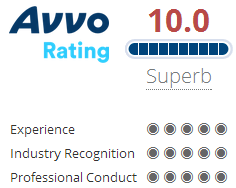The walk-and-turn test is one of three standardized field sobriety tests. These tests, commonly called SFSTs, are given to drivers stopped for a traffic violation and suspected of driving under the influence, or DUI. The tests are used to establish probable cause to arrest a driver for DUI. The tests can also used as evidence in a criminal DUI court case to how the person’s driving ability was impaired by alcohol intoxication.
In California, an alcohol-related DUI occurs when a person drives when he or she has a blood alcohol concentration (BAC) of 0.08 percent or higher. It also includes an individual driving while his or her abilities are impaired by alcohol consumption. Let’s say a driver has a BAC of 0.06 percent. The prosecution cannot prove that the driver had a BAC over the legal limit.
However, the prosecution may be able to prove that the BAC impaired the person's ability to safely operate a motor vehicle. Thus, the driver can still convicted for DUI. That’s why it is vital to understand each SFST and how its results can hinder or help the defense.
The Administration and Accuracy of the Walk-and-Turn
The walk-and-turn test is also called the divided attention test because an individual must:
- Listen to instructions.
- Follow instructions.
- Perform physical movements.
The National Highway Traffic Safety Administration, or NHTSA, says that the test is easy for sober individuals to perform. Intoxicated people have difficulty with tasks involving mental and physical skills being performed at the same time. Therefore, the walk-and-turn test measures an individual’s level of intoxication.
During the walk-and-turn test, a police officer will ask the driver to take nine steps in a straight line using the heel-to-toe motion. The driver must repeat the heel-to-toe walk in the opposite direction. The police officer looks for the following indicators of alcohol impairment when the driver:
- Starts performing the test prior to the officer finishing the instructions.
- Cannot keep his or her balance while listening to officer’s instructions.
- Stops while walking heel-to-toe to regain balance.
- Does not walk in a heel-to-toe manner.
- Does not walk in a straight line per instructions.
- Makes an improper turn.
- Uses his or her arms to keep balance.
- Takes too many or not enough steps.
It important to note that the accuracy of the test results are in accordance with the standards set by NHTSA. If a walk-and-turn test is improperly or incorrectly graded or administered, the officer may fail the driver. This is a false positive test.
Field Sobriety Tests: Improperly Administered and Poor Conditions
How a walk-and-turn test is administered is one of the factors that impact a driver’s performance on the test. Was the test administered improperly? Were the instructions not clearly given? Was the officer distracted during the test? These are all ways that walk-and-turn test can be administered improperly.
Take a moment to imagine standing outside a bar with dozens of people walking around or in front of a busy street. An officer asks you to walk heel-to-toe in a straight line. It would be difficult, right? Now imagine that you are performing the test while wearing high heeled shoes or while standing in front of a police cruiser’s flashing lights.
A noisy or distracted environment, the type of shoes the driver is wearing and an uneven surface can all create poor conditions when performing the walk-and-turn test. This means that a even a sober person can have trouble passing this test.
If you are charged with DUI and failed the walk-and-turn test, contact the Law Offices of Jonathan Franklin. We know the approach to take regarding challenging the test results.














